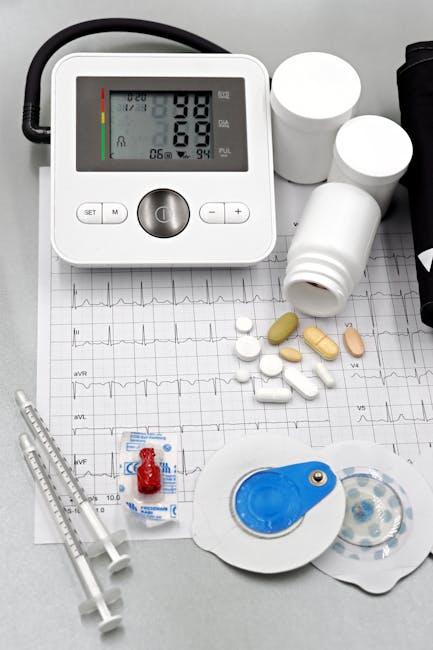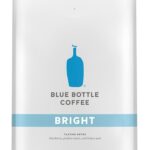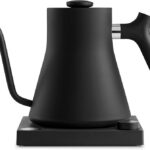Introduction: Mastering the Craft of Coffee with the Fellow Stagg EKG Brewing Guide
In the world of coffee, temperature is an unsung hero that can elevate an ordinary cup into a remarkable experience. As enthusiasts and connoisseurs alike seek to unlock the full potential of their beans, understanding the intricacies of brewing at optimal temperatures becomes essential. Enter the Fellow Stagg EKG—a sleek,high-performance electric kettle that promises precision and control for every pour. In this article, we will explore the Fellow Stagg EKG Brewing Guide, highlighting the ideal temperatures for various coffee types and the impact these nuances have on flavor and aroma. Whether you’re a seasoned barista or a curious novice, join us on a journey to perfect your brewing technique and savor each sip just as the coffee gods intended.
Understanding the Science of Brewing Temperatures for Flavor Enhancement
Brewing coffee is both an art and a science, where the temperature plays a essential role in extracting the desired flavors each coffee type has to offer. Different coffee beans have unique chemical compositions that respond variably to heat, fundamentally impacting the extraction process. Generally, the temperature range of 195°F to 205°F (90°C to 96°C) is ideal for brewing most types of coffee, but certain beans and roast levels thrive outside of this range. As an example, light roasts benefit from slightly lower temperatures to preserve their delicate flavor notes, while dark roasts can withstand higher temperatures, which helps to maximize their rich, bold characteristics.
Understanding the delicate balance of temperature can enhance the taste profiles you desire in your cup.Here’s a quick reference for optimal brewing temperatures based on coffee types:
| Coffee Type | Optimal Brewing Temperature |
|---|---|
| Light Roast | 195°F – 200°F (90°C – 93°C) |
| medium Roast | 200°F - 205°F (93°C – 96°C) |
| Dark Roast | 205°F – 210°F (96°C – 99°C) |
| Cold Brew | Room Temperature or Cold Water |
By adhering to these temperature guidelines,you can reveal the full spectrum of flavors in your coffee,whether you prefer the bright acidity of a light roast or the deep,full-bodied profile of a dark roast. Experimenting with different temperatures allows for the enhancement of specific flavor notes, resulting in a personalized brewing experience that caters to your unique palate.

Tailoring Temperature for Brewing Methods: A Guide to Coffee Varieties
Understanding the ideal brewing temperature for various coffee varieties is essential for unlocking their full flavor potential. For lighter roasts such as Geisha or Colombian,temperatures around 180-190°F (82-88°C) are ideal. These beans thrive at lower temperatures, allowing their delicate floral notes and vibrant acidity to shine. In contrast, darker roasts like French Roast or Italian Espresso are best brewed at a higher range of 195-205°F (90-96°C). The increased heat helps to extract the rich, bold flavors inherent in these beans while also balancing their natural bitterness.
For the best results, it’s helpful to categorize your coffee selections into ranges based on roast level and flavor profile. Consider the following table as a quick reference:
| Coffee Variety | Optimal Temperature range (°F) | Flavor Notes |
|---|---|---|
| Lighter Roasts | 180-190°F | Floral, Fruity, Bright |
| Medium Roasts | 190-200°F | Balanced, Chocolatey, Nutty |
| Darker Roasts | 195-205°F | Bold, Smoky, Rich |
by fine-tuning the brewing temperature through your Fellow Stagg EKG, you can create a harmonious cup that highlights the unique characteristics of each coffee variety. Experimenting within these recommended ranges will help you discover how subtle changes in temperature can enhance the tasting experience, transforming your daily brew into a captivating ritual.

Maximizing Extraction: Ideal Temperature Ranges for Different Coffee Types
Understanding the perfect temperature range for brewing different types of coffee is essential for maximizing flavor extraction. Each coffee origin, roast level, and brewing method can notably influence the desired temperature, making this a critical aspect of the brewing process. Below are some ideal temperature guidelines for various coffee types:
- Light Roast: 195°F – 205°F (90°C - 96°C) – Ideal for highlighting fruity and floral notes.
- Medium Roast: 200°F – 210°F (93°C – 99°C) – Balances acidity with body, suitable for caramel and nutty flavors.
- Dark Roast: 195°F – 205°F (90°C – 96°C) – Best for extracting rich, bold, and chocolatey undertones.
- Cold brew: 100°F - 150°F (38°C – 65°C) - Facilitates a smooth and less acidic profile for mellow flavors.
- Espresso: 190°F – 205°F (88°C – 96°C) - Captures bold,concentrated flavors and velvety crema.
To further refine your brewing technique,consider the grind size and brew time,as they also play key roles in flavor extraction. Pairing these ideal temperatures with the right variables can transform your coffee drinking experience. Here’s a simple table to help visualize the temperature adjustments for different brewing methods:
| Coffee Type | Optimal Temperature (°F) | Brewing Method |
|---|---|---|
| Light Roast | 195 – 205 | Pour Over / Aeropress |
| Medium Roast | 200 – 210 | Drip Coffee Maker |
| Dark Roast | 195 – 205 | French Press |
| Cold Brew | 100 – 150 | Cold Brew Coffee Maker |
| Espresso | 190 – 205 | Espresso Machine |

Mastering the Fellow Stagg EKG: tips for Precision Brewing at Home
To achieve the perfect cup of coffee using the Fellow Stagg EKG, precision in temperature control is paramount. With the ability to precisely set the water temperature, you can adapt your brewing technique to suit various coffee types.Generally, lighter roasts that are rich in acidity and floral notes benefit from higher brewing temperatures between 195°F and 205°F. This range helps to extract the nuanced flavors effectively, resulting in a vibrant and refreshing cup. Conversely, darker roasts, which lean towards chocolatey and bold profiles, thrive at slightly lower temperatures around 190°F to 200°F. This prevents over-extraction, which can lead to bitter and unpleasant flavors dominating the tasting experience.
Understanding the ideal temperature for each coffee type can elevate your home brewing. To assist you in this endeavor, consider this handy reference table:
| Coffee Type | Optimal Brewing temperature |
|---|---|
| Light Roast | 195°F – 205°F |
| Medium Roast | 200°F – 205°F |
| Dark Roast | 190°F – 200°F |
| Espresso | 190°F - 205°F |
Experimenting with various temperatures allows you to unlock the unique characteristics of each coffee bean. Don’t hesitate to keep a brewing journal to note your adjustments and desired outcomes. By mastering the temperature control with your Fellow Stagg EKG, you’ll not only enhance your brewing skills but also develop a deeper appreciation for the diverse world of coffee.
future Outlook
as we draw the curtain on our exploration of the Fellow stagg EKG Brewing Guide, it becomes clear that mastering the art of coffee brewing is as much a science as it is a personal journey. From the rich, bold depths of dark roasts to the vibrant, bright notes of light varieties, each coffee type comes alive at its own optimal temperature, and the Stagg EKG is the perfect companion on this quest.
Understanding these nuances not only enhances your brewing experience but also allows you to savor and appreciate the diverse world of coffee in all its glory. Whether you’re a meticulous barista, a coffee enthusiast, or simply someone who enjoys a great cup of joe, applying the insights from this guide will empower you to unlock the full potential of your favorite beans.
So,the next time you reach for the kettle,remember: it’s not just about boiling water; it’s about respecting the unique profile of each coffee and letting it shine. May your brewing journey be filled with delightful discoveries and perfectly brewed cups, one temperature at a time. Happy brewing!



